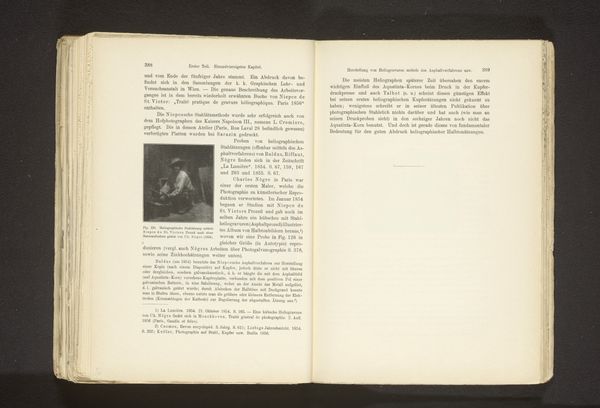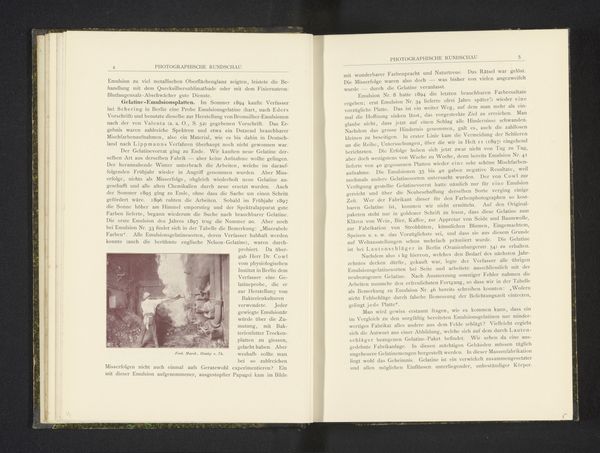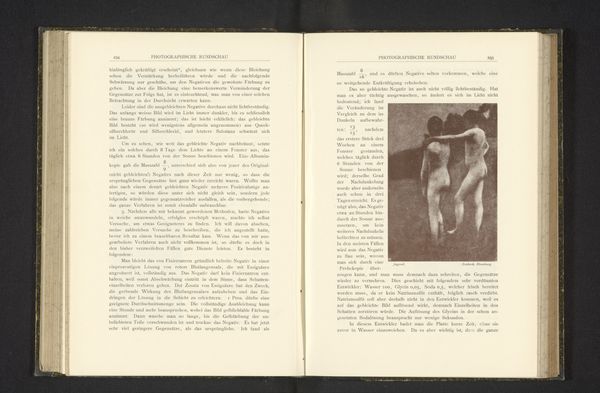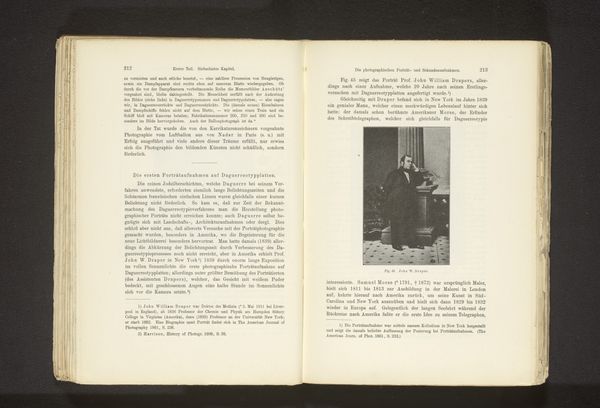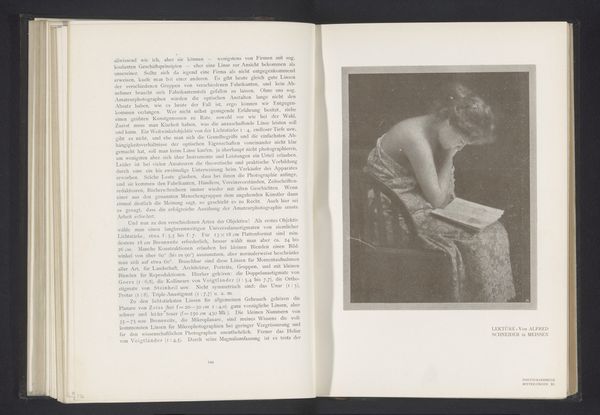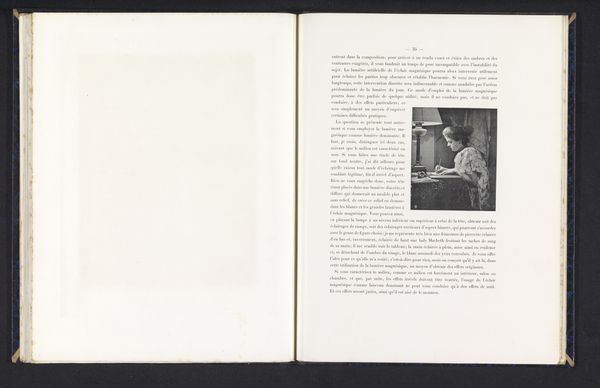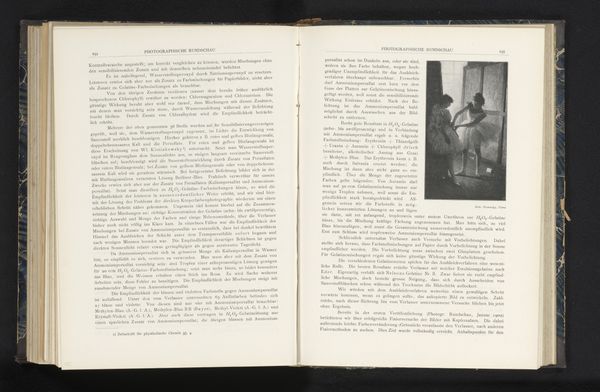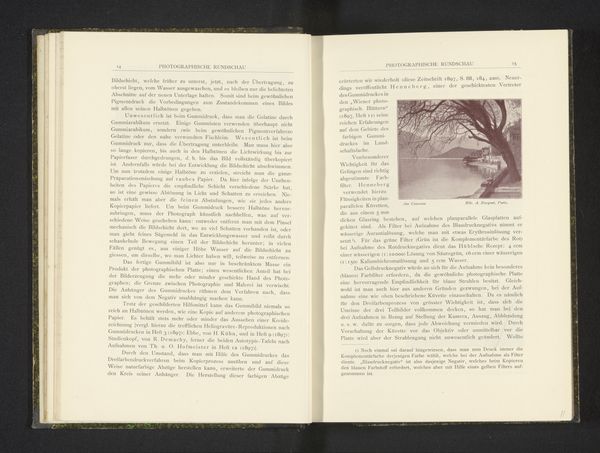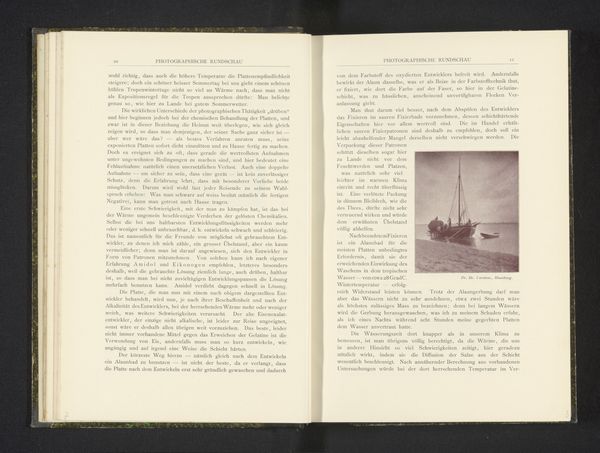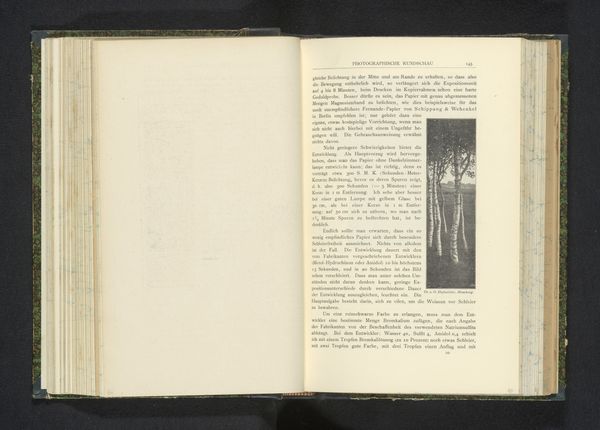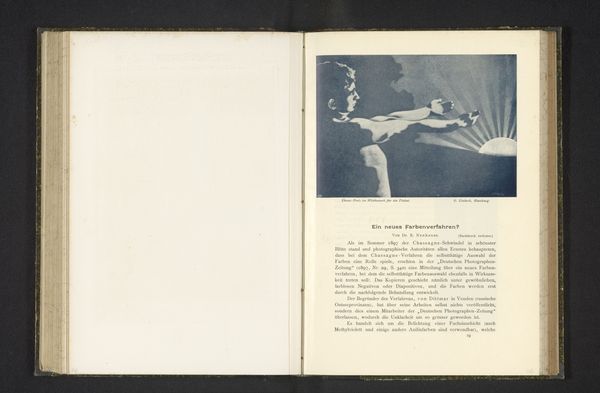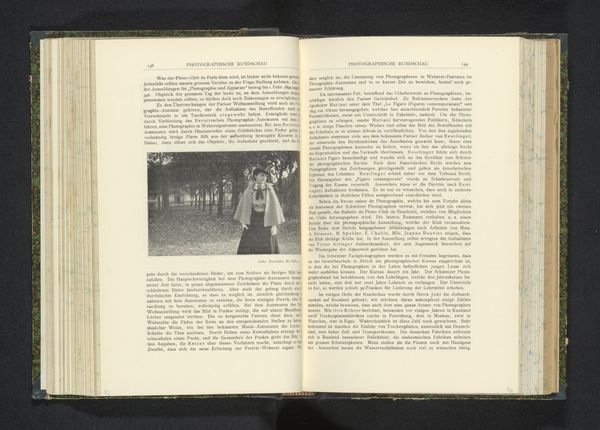
print, photography, gelatin-silver-print
#
portrait
# print
#
landscape
#
photography
#
gelatin-silver-print
#
symbolism
#
genre-painting
Dimensions: height 56 mm, width 85 mm
Copyright: Rijks Museum: Open Domain
Curator: George Einbeck's "Gezicht op een figuur dat de handen uitstrekt naar de zon," a photograph printed before 1898, presents us with an enigmatic tableau. My immediate response is one of somber contemplation—a lone figure, stark against the landscape, seems to reach for an unseen sun, an allegory of longing and resilience, rendered in tones of silver. Editor: I see it as a challenge to the established hierarchies within photography at the time, where portraiture and landscape were strictly delineated, right? Einbeck, in daring to combine the two, subverts the conventions and allows space for genre-painting. And the materiality itself—the specific photographic process and how its labor might engage with consumption trends that speak to a modernising society and anxieties of the turn of the century. Curator: I agree with that sentiment regarding genre; in terms of process, a gelatin-silver print such as this indicates reproducibility and access, key to the spread of this visual message. In terms of subject, the photograph presents a fascinating study in contrast, the human silhouette asserting its will, perhaps, in confrontation with the overwhelming natural world. It provokes the existential queries which speak to issues such as freedom, expression and spiritual discovery which is an indication of its adherence to Symbolism as an artistic movement of the time. Editor: Very true. Its visual language does not end there. There’s an inherent politics in depicting the human form this way too—particularly considering how marginalized voices had historically been silenced. What does it mean to present the human silhouette reaching towards a symbolically patriarchal power, during an era of social and political change? There's also a sense of resistance, claiming space within this photographic print—particularly against an era when these materials had material, economic, and environmental costs. Curator: Interesting… perhaps that’s too modern of a reading though; while acknowledging how the image speaks to power and freedom struggles in later centuries and today, my take on it remains personal in that it highlights the emotional connection and symbolic pursuit we all seek in our lives regardless of social and temporal situation. It reminds me that this speaks to themes of loneliness as well as individual effort during such an unstable period within modern Western art! Editor: Fair enough! Either way, Einbeck provokes dialogues between art history and contemporary theory for a conversation that can speak volumes—illuminating new ideas when viewed through multiple lenses that transcend time. Curator: Absolutely. A rich artwork, filled with complexities of thought and an insightful lens to different philosophical positions.
Comments
No comments
Be the first to comment and join the conversation on the ultimate creative platform.
